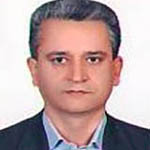Early Islamic Period Based on the Written Documents and the Role of Yazd City in the Archaeological Data
Author(s):
Abstract:
One of the most important problems on the city of Yazd in the early Islamic period، is the silent geographical and historical resources. Because when texts dealing with Yazd region، they are mentioned Naein، Meybod، Kasah and Fahraj as four major cities of this region which had jame mosque، but they are not called the city of Yazd. This has caused that many researchers called the city of Yazd as Kasah and after several centuries Yazd has replaced. Based on a careful study of the geographical texts، can we know the city of Yazd? This is the first studying question posed in this article. Second question is about Kasah city. Is Kasha the same with city of Yazd? Although geographical texts are silent about city of Yazd، but we can find signs about this city in the early Islamic period. When geographical texts speak of Kasah، they refer to a city located on the suburbs. The river run through the described city which originated from a mountain village. The village، also had a lead mine. The village has good weather and the fruit trees. This city has a castle with two jame mosque and its water source was from qanat. If we adapt these descriptions with geographical conditions of Yazd – Ardakan plain، we can understand the existence of city of Yazd. Because Taft river is the only river of yazd – ardakan plain which after passing through the city of Taft، flows through the city of Yazd. Moreover، Taft had a lead mine which is not used about twenty years. The local texts mentioned that Yazd was composed of several communities like Fahadan، Kooshk - e - no and was conquered by the Muslims in the early Islamic period. The archaeological excavations carried out on the historical context of city of Yazd، potteries which were found and are dating the 3rd to 5th centuries AH. These potteries consists of splashed and sgraffito decorated potteries. Splashed wares have buff fabric covered with white or buff slip. Their shapes including bowls، dishes and cups and splashed with green، brown and yellow slip and glaze. This kind of pottery is comparable with some peripheral sites like Ghubayrā، Kerman. Sgraffito wares، like splashed wares، have buff fabric covered with white or buff slip. Their shapes including bowls، dishes and cups. Designs incised through a white slip under a yellowish transparent glaze، splashed with green، brown and yellow. Mashhad-i Davazdah Imam was built by Abu Saeed and Abu Ya’ghoub، both military governors of Kakuyid ruler Ala-al Doleh Faramarz. Its inscription has 429 AH dating and has become the oldest monument of the city of Yazd. Also، the local texts said that Imam Reza prayed in the Fort mosque in Daro al-Shfa community، which has built a monastery memorizing his presence later on during Safavid period. These reasons shows that the city of Yazd existed in the early Islamic period. When Muslim geographers speak about Kasah، they said this city composed of several villages which city of Yazd was located on its suburbs. For this reason، it cannot be said a city. On the other hand، the local text said this city was founded by Alexander the Great after conquering the Achamenid Empire and prisoners accommodated in. After construction of the city of Yazd، people left Kasah and settled in Yazd; while On the basis of geographical texts like Masalik al-mamalik or Suwar al-aqālīm، Kasah is an Islamic city in Yazd region. These are existing contradictions between the local text and geographical. Perhaps rostagh dehestan is the same Kasah، because this dehestan composed of several villages dates back from early Islamic period and is consistent with the descriptions of geographers from Kasah.
Keywords:
Language:
Persian
Published:
Iranian Archaeological Research Journal, Volume:4 Issue: 6, 2014
Pages:
159 to 174
https://magiran.com/p1310141
مقالات دیگری از این نویسنده (گان)
-
The Interaction of Iranian Art and Shia Ideas in the Tower Tombs of Kojur
Sharareh Atayinia, Mohammad Mortezaee*
Parseh Journal of Archaeological Studies, -
The Sham Valley and the Question of the Ilkhanids’ Religious Leniency in Northwest Iran (Jolfa)
Soraya Afshari, Liliy Niakan *, Behrooz Omrani, Mohammad Mortezayi
Journal of Archaeological Studies,



